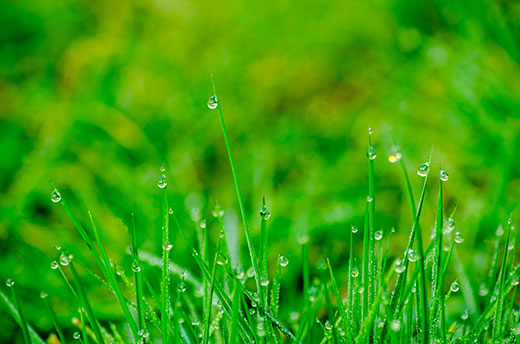
When a home's lawn is too wet to mow, wait for a time when you can do so. Then raise the mower blade so that you don't take off more than one-third of the grass at one time.
K-State expert offers tips when lawn is too wet to mow
Never mow more than one third of grass at a time
May 20, 2020
MANHATTAN, Kan. – While Midwest farmers believe it never rains enough for their liking, many homeowners sometimes claim just the opposite when it comes time to mow their lawn.
Ward Upham, a horticulture specialist with K-State Research and Extension, said a solution during times when rain comes at less-than-ideal times for homeowners is to mow the grass when possible – even though that usually means the grass is higher than normal.
“But,” he cautions, “set your mower as high as possible and cut the grass down in steps.”
That means homeowners will have to mow more often, Upham said, moving down the height of their mower blade gradually until they’re taking off one-third of the grass blade.
“It is always best never to take more than one-third of the grass blade at one time,” Upham said. “If more is taken in one cutting, the plant reacts by using stored energy reserves to quickly send up new growth. This reduces the amount of energy available for the plant to deal with stress or damage done by insects or disease.”
Upham and his colleagues in K-State’s Department of Horticulture and Natural Resources produce a weekly Horticulture Newsletter with tips for keeping yards healthy and beautiful year-round. The newsletter is available to view online or can be delivered by email each week.
Interested persons can also send their yard-related questions to Upham at wupham@ksu.edu.

